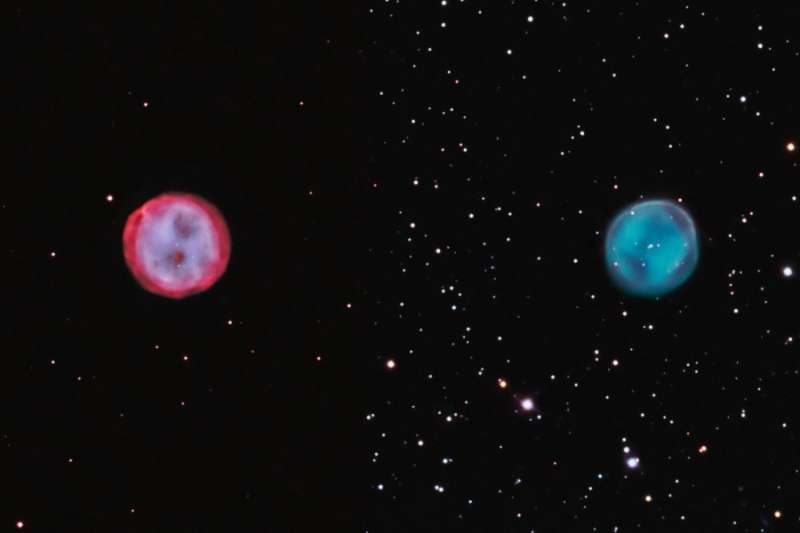
|
Credit & Copyright: Don Goldman
Explanation:
Captured in colorful telescopic portraits,
two cosmic owls
glare back toward planet Earth in this
intriguing comparison of
planetary nebulae.
On the left is M97 in the
constellation Ursa Major,
also known in the northern hemisphere as the Owl Nebula.
On the right is its visual counterpart, the
southern Owl Nebula
in the constellation Hydra, cataloged as PLN 283+25.1.
Both nebulae are remarkably
symmetric, round, and similar in size,
some 2 light-years across or about 2,000 times the diameter
of Neptune's orbit.
Planetary nebulae
are produced during a final phase in the
life of a sun-like star, an example of the fate that awaits
the Sun when it runs out of nuclear fuel in another 5 billion years.
Both images were made using narrowband
filters and different color mappings.
The image of the southern Owl also includes broadband data,
bringing out the surrounding star field.
|
January February March April May June July August September October November December |
| |||||||||||||||||||||||||||||||||||||||||||||||||||||||
NASA Web Site Statements, Warnings, and Disclaimers
NASA Official: Jay Norris. Specific rights apply.
A service of: LHEA at NASA / GSFC
& Michigan Tech. U.
Based on Astronomy Picture
Of the Day
Publications with keywords: planetary nebula
Publications with words: planetary nebula
See also:
- APOD: 2025 August 31 Á NGC 7027: The Pillow Planetary Nebula
- APOD: 2025 August 22 Á A Tale of Two Nebulae
- APOD: 2025 August 5 Á NGC 6072: A Complex Planetary Nebula from Webb
- APOD: 2025 July 29 Á A Helix Nebula Deep Field
- APOD: 2025 July 13 Á Planetary Nebula Mz3: The Ant Nebula
- APOD: 2025 June 9 Á Between Scylla and Charybdis: A Double Cosmic Discovery
- APOD: 2025 May 14 Á NGC 1360: The Robins Egg Nebula
